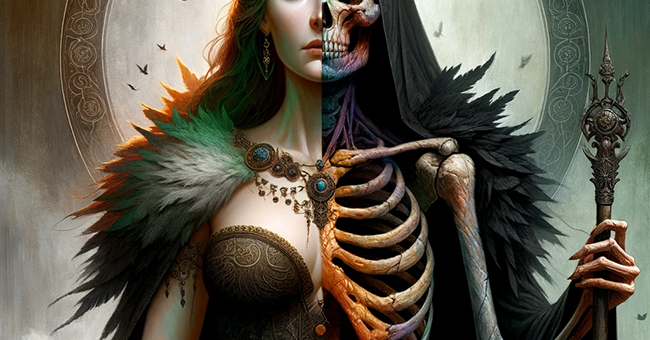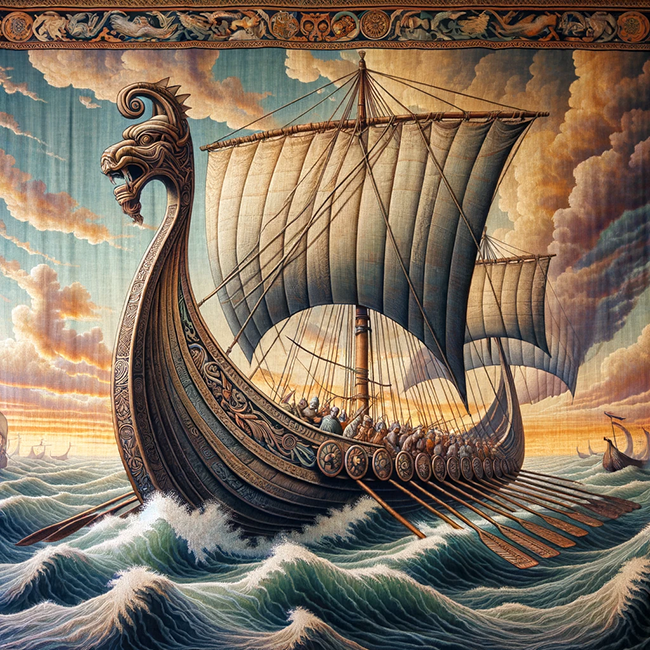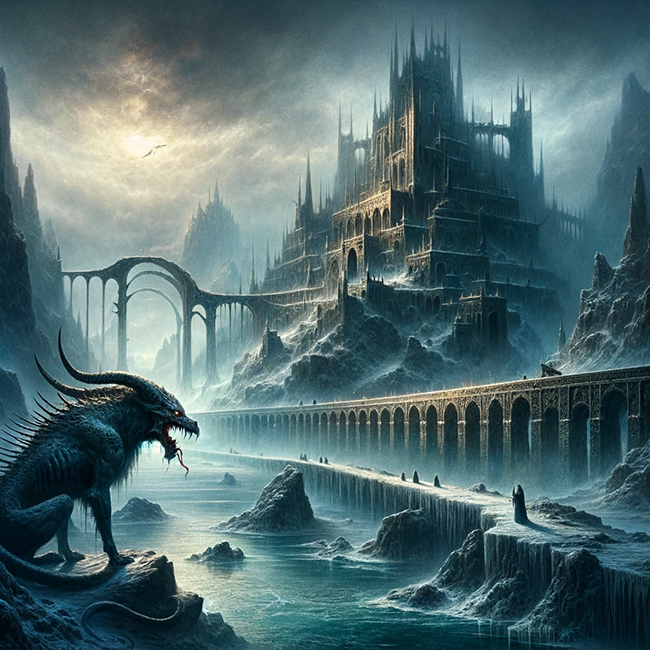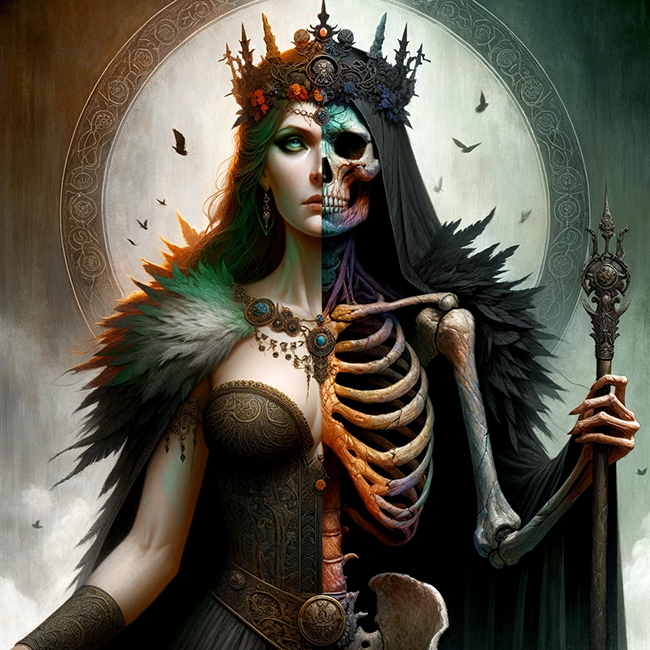
In Norse mythology, Hel is a complex and intriguing figure who presides over the realm also named Hel. She rules over those who have died of illness or old age, distinct from the warriors who fall in battle and are taken to Valhalla or Fólkvangr.
Hel’s domain is part of the Norse cosmology of the afterlife, a reflection of the Norse culture’s nuanced views on death and the hereafter.

Origins and Family
Hel is often described as the daughter of Loki, the trickster god, and the giantess Angrboða. This makes her part of a brood of some of the most fearsome and significant beings in Norse mythology, including her brothers, the wolf Fenrir and the serpent Jörmungandr.
Her lineage alone marks her as a figure of great power and importance. According to the Prose Edda, one of the primary sources of Norse mythology written by Snorri Sturluson in the 13th century, the gods, foreseeing trouble from Hel and her siblings, cast her into the underworld, making her its ruler.

Description and Realm
Hel is often depicted in texts and art as a figure who is half alive and half dead. She is sometimes portrayed as half beautiful woman and half rotting corpse.
This physical representation symbolizes her dominion over both life and death, and her role as a bridge between the worlds of the living and the dead.
Her realm, also named Hel, is described as a dreary, dark place, yet it is not necessarily a place of punishment. It mirrors the Viking belief in an afterlife that continues the existence patterns of the living world, with Hel’s hall offering some form of continuance for those who did not die gloriously in battle.

Role in Norse Mythology
Hel’s role in Norse mythology is not just as a passive overseer of the dead. In several myths, she interacts with the gods, demonstrating her power and authority.
One of the most famous stories involving Hel is that of the death of Baldr, the beloved god of light and purity. When Baldr dies, the gods send an emissary to Hel, hoping to persuade her to allow Baldr to return to the realm of the living.
Hel agrees, but only on the condition that everything in the world weep for Baldr. The mission ultimately fails due to the refusal of a single giantess, often thought to be Loki in disguise, showcasing Hel’s unwavering rule over her domain and the dead.

